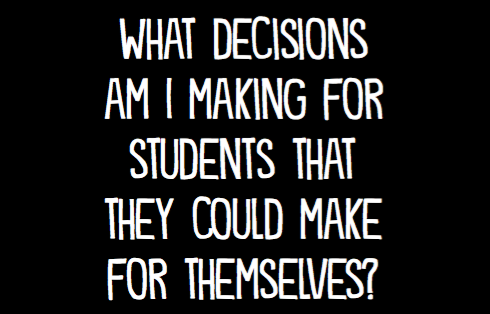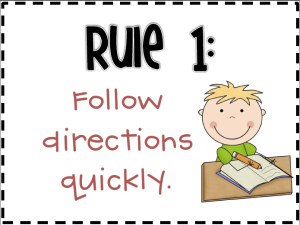Lately I’ve been wondering if in our attempt to create life-long learners, we are accidentally creating life-long students.
Does what we do each day at school help learners, learn how to learn?
Or how to be taught?
The unexpected and unfortunate circumstances of Distance Learning has presented an interesting litmus test for answering this question.
How has the experience of distance learning differed for:
Children whose time at school has helped them to know:
- what their own interests, passions, purposes, curiosities and needs are
- how to set their own intentions, criteria for success, goals and finish lines
- how to find, curate and judge resources that are most helpful for them as learners
- when, where and with whom they learn best
- how to make decisions about the best way to capture, document, and collect what they learn along the way
- how, when and from who to ask for feedback, support, help and guidance
- how to self-assess and triangulate perspectives on how they are doing and what their next steps are
- how to take their learning public – the different tools, approaches, and forums for doing so
- how to self-manage: to organize their time, tasks, and materials
Compared to…
Children who show up to school each day and are used to being told:
- what to learn
- why to learn it
- when to learn it
- how to learn it
- where to learn it
- with whom to learn it
- what resources to use
- how to capture and document
- how they are doing and what their next steps are
- when, how, with whom to share it with
Obviously, the goal is not to prepare children for Distance Learning. But Distance Learning gives us a unique snapshot into learning without school, learning beyond school and how learners approach learning when we’re not there with them.
What we do as educators each day can either contribute to an internal or external locus of control for the children we work with. Learning can either be seen as something done by them or something done to them. If children leave their years at school, thinking learning is only the by-product of teaching, then what happens when all of the sudden they no longer have ‘teachers’? Then there’s no more learning? Let’s hope not!
So what can we do, as educators, to be sure we are creating life-long learners?
- Unpack the difference between learning and school:
2. Spend more time, learning about learning:
What do you believe about learning?
3. Ask this simple, powerful question of ourselves:

Credit –John Spencer
4. . Take small steps sharing, and eventually shifting over, planning for learning



5. Elevate the importance and role of ATL skills in everything we do

Credit – Orenjibuta
6. Help learners take back ownership over their learning.

Credit – Barbara Bray and Sylvia Duckworth
7. Be careful not to confuse compliance and engagement.

Credit – Barbara Bray and Sylvia Duckworth
8. Be careful not to conceptualize “independent learners” as students who follow our directions by themselves without reminders

9. Take lessons learned from Distance Learning back with us, to keep pushing the envelop and breaking the mould of what school could be

10. Pull wisdom from the famous adage: Give a man a fish and he eats for a day. Teach a man to fish and he eats for a lifetime.
“Give a child their learning, and they’ll learn for a day.
Teach a child how to learn, and they’ll learn for a lifetime”
 .
.
So whether you are still in Distance Learning, heading back to IRL school, or already back in the normal swing of things, now is a chance for all of us to reflect and take stock of whether our intentions and actions truly create the life-long learners we hope for.
How do you ensure you are supporting the growth of life-long learners?
How do you prioritize learning how to learn?
How do you help learners discover who they are as learners and how best they learn?